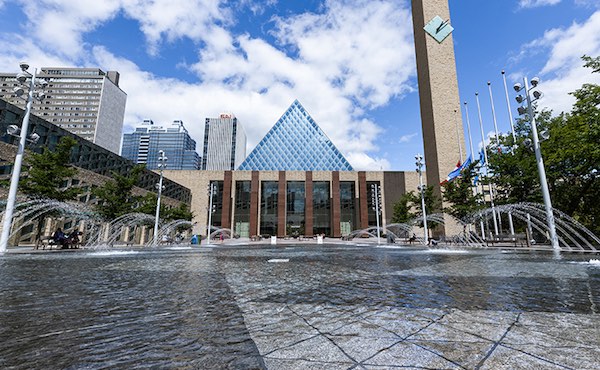Alberta
City of Edmonton dumping two deputy city managers, bringing in new Chief Climate Officer

News Release from The City of Edmonton
|
|
Alberta
School defunding petition in Alberta is a warning to parents

This article supplied by Troy Media.
A union-backed petition to defund independent schools in Alberta could trigger a wave of education rollbacks across Canada
A push to defund independent schools in Alberta is a warning to every Canadian parent who values educational options.
A petition backed by the Alberta teachers’ union may be the first step toward reduced learning choices across Canada. Independent schools, most of them non-elite and often focused on a specific pedagogical approach, receive partial public funding in Alberta and serve diverse student populations.
The petition, launched under Alberta’s citizen initiative law, could trigger a provincewide referendum if it meets the required threshold set by provincial election law.
If your child isn’t in a standard public classroom, whether they’re home-schooled, in a charter, Francophone, Catholic, or
specialized public program, this petition puts your educational decisions at risk.
Opponents of choices in education have been forthright in their attempts to erode the large and successful range of learning options that most Canadians enjoy. Instead, they seem to be aiming for a single, uniform, one-size-fits-all system with no variation for children’s many learning styles and needs, nor for new teaching innovations.
During last year’s NDP leadership campaign in Alberta, candidate (and current MLA) Sarah Hoffman proposed effectively eliminating charter schools and forcing them to join public school boards.
The current recall effort targeting Alberta Education Minister Demetrios Nicolaides lists “charter-private school” funding as a rationale. There is no such thing as a charter-private school, since charter schools are public and 100 per cent provincially funded.
It’s clear the petition is aimed at restricting or defunding charter schools despite their popularity. More than 15,000 students are enrolled and over 20,000 more are on wait-lists in Alberta.
Alberta isn’t the only place where schooling options are coming under pressure. Yukon’s NDP leader has called for defunding and eliminating the territory’s entire Catholic separate system. Similar arguments exist in Ontario. British Columbia doesn’t have a Catholic school system. Newfoundland had one, but in 1998 merged the Catholic board into the public one.
Going as far back as 2010, provinces including Newfoundland, British Columbia, P.E.I. and Nova Scotia have sought to justify limiting the Francophone schooling options they offer due to high costs and budget limitations.
These provincial actions raise a larger question. Efforts to defund Catholic and Francophone schooling are striking, given that both are constitutionally protected. If, as teachers’ unions argue, even constitutionally protected choices can be defunded, restricted or eliminated, how safe are all the other options, like independent, charter, or microschools that aren’t written into the constitution but excel at producing well-formed, knowledgeable graduates ready for adulthood?
Even specialized programs offered within the public system aren’t safe. Last year, the Calgary Board of Education shut down its all-boys program, saying the space was needed to accommodate general enrolment growth. However, the building was then leased out to a post-secondary institution. In Vancouver, the public board stopped new enrolment in its gifted student program, ending “the only publicly funded option for kids who need an accelerated learning environment.”
If these formal attacks on educational diversity can happen in Alberta, which has long been Canada’s leader in making a wide variety of learning options available, affordable and accessible to families, then it certainly can happen in other provinces as well.
The Saskatchewan Teachers’ Federation has already asked the government to end funding for independent schools. A similar push has surfaced in British Columbia. The claim that independent schools drain resources from the public system is incorrect. Every student who enrolls in an independent school costs the provincial budget less and frees up space, teaching time, and other public school resources for everyone else.
These efforts reflect a zero-sum view of education and a false view that only some schools serve the common good.
A better approach is to expand what’s available. Provinces can support more learning options for families, which means more resources and better results for students, no matter how or where they learn.
We need to pay attention to what’s happening in Alberta and elsewhere. Parents don’t want fewer options to help their children enjoy school and flourish academically or personally. If educational diversity can be rolled back in Alberta, it can be rolled back anywhere.
Canadians who value educational alternatives need to pay attention now—before the decisions are made for them.
Catharine Kavanagh is western stakeholder director at Cardus, a non-partisan thinktank that researches education, work and public life.
Troy Media empowers Canadian community news outlets by providing independent, insightful analysis and commentary. Our mission is to support local media in helping Canadians stay informed and engaged by delivering reliable content that strengthens community connections and deepens understanding across the country
Alberta
Alberta government’s plan will improve access to MRIs and CT scans

From the Fraser Institute
By Nadeem Esmail and Tegan Hill
The Smith government may soon allow Albertans to privately purchase diagnostic screening and testing services, prompting familiar cries from defenders of the status quo. But in reality, this change, which the government plans to propose in the legislature in the coming months, would simply give Albertans an option already available to patients in every other developed country with universal health care.
It’s important for Albertans and indeed all Canadians to understand the unique nature of our health-care system. In every one of the 30 other developed countries with universal health care, patients are free to seek care on their own terms with their own resources when the universal system is unwilling or unable to satisfy their needs. Whether to access care with shorter wait times and a more rapid return to full health, to access more personalized services or meet a personal health need, or to access new advances in medical technology. But not in Canada.
That prohibition has not served Albertans well. Despite being one of the highest-spending provinces in one of the most expensive universal health-care systems in the developed world, Albertans endure some of the longest wait times for health care and some of the worst availability of advanced diagnostic and medical technologies including MRI machines and CT scanners.
Introducing new medical technologies is a costly endeavour, which requires money and the actual equipment, but also the proficiency, knowledge and expertise to use it properly. By allowing Albertans to privately purchase diagnostic screening and testing services, the Smith government would encourage private providers to make these technologies available and develop the requisite knowledge.
Obviously, these new providers would improve access to these services for all Alberta patients—first for those willing to pay for them, and then for patients in the public system. In other words, adding providers to the health-care system expands the supply of these services, which will reduce wait times for everyone, not just those using private clinics. And relief can’t come soon enough. In Alberta, in 2024 the median wait time for a CT scan was 12 weeks and 24 weeks for an MRI.
Greater access and shorter wait times will also benefit Albertans concerned about their future health or preventative care. When these Albertans can quickly access a private provider, their appointments may lead to the early discovery of medical problems. Early detection can improve health outcomes and reduce the amount of public health-care resources these Albertans may ultimately use in the future. And that means more resources available for all other patients, to the benefit of all Albertans including those unable to access the private option.
Opponents of this approach argue that it’s a move towards two-tier health care, which will drain resources from the public system, or that this is “American-style” health care. But these arguments ignore that private alternatives benefit all patients in universal health-care systems in the rest of the developed world. For example, Switzerland, Germany, the Netherlands and Australia all have higher-performing universal systems that provide more timely care because of—not despite—the private options available to patients.
In reality, the Smith government’s plan to allow Albertans to privately purchase diagnostic screening and testing services is a small step in the right direction to reduce wait times and improve health-care access in the province. In fact, the proposal doesn’t go far enough—the government should allow Albertans to purchase physician appointments and surgeries privately, too. Hopefully the Smith government continues to reform the province’s health-care system, despite ill-informed objections, with all patients in mind.
-

 Brownstone Institute2 days ago
Brownstone Institute2 days agoBizarre Decisions about Nicotine Pouches Lead to the Wrong Products on Shelves
-

 Alberta2 days ago
Alberta2 days agoAlberta government’s plan will improve access to MRIs and CT scans
-

 Health2 days ago
Health2 days agoRFK Jr’s argument for studying efficacy of various vaccines
-

 Daily Caller2 days ago
Daily Caller2 days agoTrump Reportedly Planning Ground Troops, Drone Strikes On Cartels In Mexico
-

 armed forces14 hours ago
armed forces14 hours agoIt’s time for Canada to remember, the heroes of Kapyong
-

 International2 days ago
International2 days agoBBC uses ‘neutrality’ excuse to rebuke newscaster who objected to gender ideology
-

 Agriculture2 days ago
Agriculture2 days agoThe Canadian Food Inspection Agency’s Bloodlust: Worshipping Policies While Ignoring Science
-

 armed forces2 days ago
armed forces2 days agoWhy Do Some Armed Forces Suffer More Suicides Than Others?








